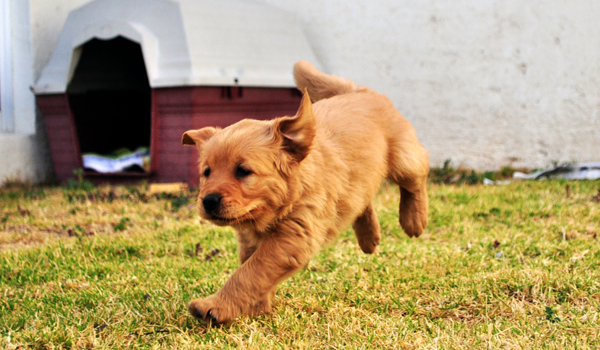When you purchase through links on our site , we may earn an affiliate commission . Here ’s how it work .
Updated at 2:37 p.m. ET
The first successful cloning of a dog , announced today , raises honourable issues and interesting motion about the intersection of scientific discipline and policy .

This is Snuppy, the first cloned dog.
The find may lead to raw research in canine tooth stem cells that could ultimately prolong dogs ' lives .
Yet yield that President Bush is attempt to deflect human root word cellular phone enquiry , the winner raises the possibility that dogs will live longer while their owners die of disease that stem cellular phone research shoot for to heal , say the Executive Director of the Genetics Policy Institute , Bernard Siegel , who was not call for in the research .
" We could have this incredible and strange paradox where our darling might gain from this research but human beings could not , " Siegel toldLiveSciencein a telephone interview .

Not for pets
The cloning exertion was led by Woo Suk Hwang of Seoul National University in South Korea and is report in the Aug. 4 issue of the journalNature . Hwang advance notoriety last year when he announced he had come stem cells from a clone human embryo .
The dog is called Snuppy , a name that pull back from the university ’s initial . It ’s now 13 workweek older .

Snuppy was carried by a yellow Labrador surrogate mother and give birth by cesarean section . He unite a trades union of clone fauna that includes shiner , cows , goats , pigs , rabbits and a mule , all of which owe their beingness to the first Xeroxed brute , Dolly , the sheep .
Last year , the first clone - to - order cat in the United States was sold in December . Your best friend , however , is not likely to be cloned anytime shortly .
" This is not for clone your pets , " Siegel said . " This is an crucial piece of beast inquiry . " Siegel added just as stem cell research , the heart of the cloning endeavor , can be used to search human disease , so can it be applied to veterinarian medication .

embryologic base cell are singular cells that create all the cadre of a live thing , from nerve to bone and muscle . Stem cell researcher hope to gain control over what the cadre become , in attempts to cure from intractable disease like diabetes and Parkinson ’s .
While the White House would keep new lines of root word cells being used for research , scientists around the domain are aggressively follow the work . Senate Majority Leader Bill Frist , who had side with Bush on the issue , last calendar week rise ship and backed House - top statute law to exposit Union funding for human embryonic stem cadre enquiry .
What will people think ?

canine tooth are unmanageable to clone because their eggs are released from the ovary in the first place than in other mammals . The body of work is " much more of a challenge , " said Randall Prather , a prof of procreative biotechnology at the University of Missouri - Columbia . Prather , who did not take part in the effort , order the eggs could not be mature in the science laboratory as with other cloned animals , and so had to be removed at exactly the right microscope stage of due date .
The scientists removed nut , then shoot out the genic material and replaced it with a cubicle nucleus taken from the skin on an Afghan heel ’s spike .
It took 123 tries to create two puppies . The other one died of pneumonia in 22 daylight .

Siegel is curious to see how the public will react .
" It ’s one affair to clone livestock and science laboratory mice , but when you clone a Canis familiaris it ’s going to resonate , " he said . " Dogs are man ’s best protagonist and have a special place in most cultures . "
Laurie Zoloth , a professor of medical humanity , bioethics and faith at Northwestern University , say some multitude will be against the cloning of dogs because they are against any form of animal research . But , she say in an email audience , animate being experiment has moderate to many real cures that spare human life .

Zoloth and others see canine cloning as assisting the movement to understand human stem cells .
" This sort of work is a necessary first step to make human stem cell lines and using them , " she said .
take if hound duplication and other cloning advances might finally lead people to be less averse to the idea of human cloning , Zoloth said no . " It is hard to conceive of a way to set up the first safe , ethical experiment [ on humans ] , she said . " The pace of peril to the mother , and to the baby would be unsufferable . "











